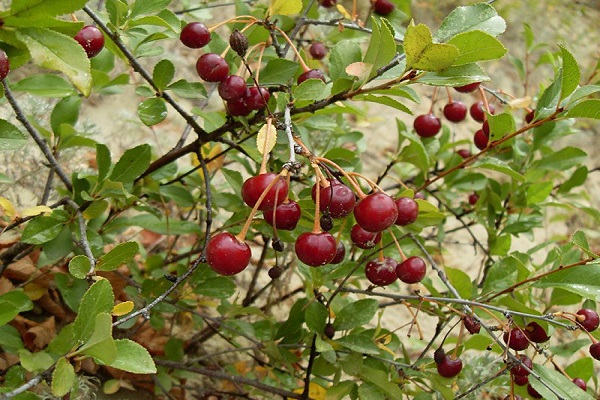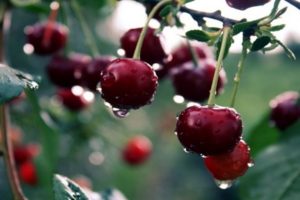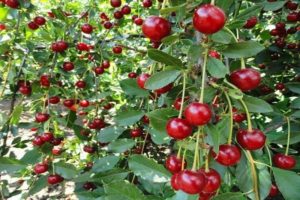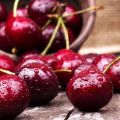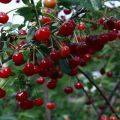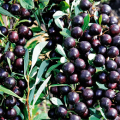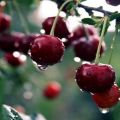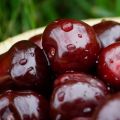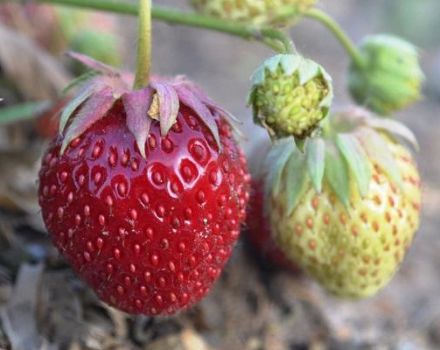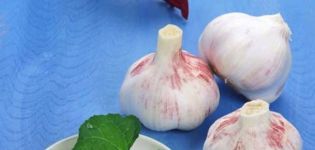Description of shrub cherry varieties, planting and care, growing rules
In arid areas with low temperatures in winter, the selection of suitable horticultural crops is limited. Unpretentious and easy to care for, shrub cherry is an alternative to the ordinary tree cherry. It grows well on poor alkaline soils, easily tolerates hot summers without abundant watering and is not sensitive to severe frosts.
Varieties and their characteristics
Shrubs are usually called varieties bred from the wild steppe cherry, which is widespread in Western Siberia, Kazakhstan, and the European part of our country.
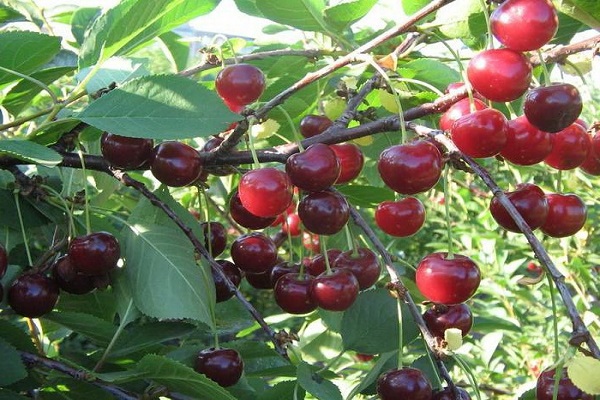
The common features of all varieties bred from wild bush cherry are:
- short stature, the height of the bush usually does not exceed 1.5-2 m;
- fruits are medium or small, sourish;
- spherical crown;
- abundant growth;
- high resistance during dry periods and frosty winters.
Crossing of an unpretentious steppe "inhabitant" with other productive representatives allowed to obtain good resistant varieties.
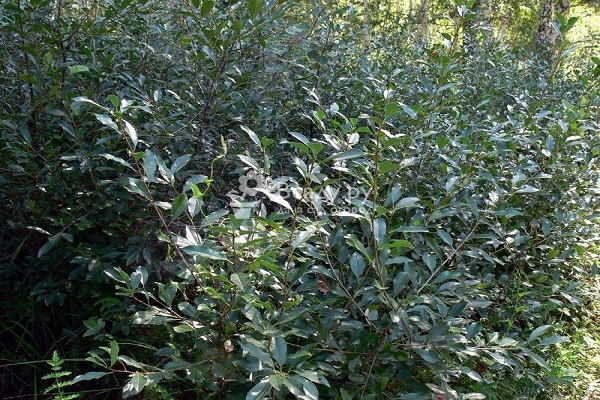
The Subbotinskaya cherry deserves attention for its bright scarlet fruits with a pleasant sweet and sour taste. Unpretentious to care for, rarely grows above 2-2.5 m in height, independently forms a neat spherical crown. Requires the obligatory presence of pollinating trees on the site, the yield is high (5-9 kg).
Another interesting “descendant” of our steppe “inhabitant” is the Altayskaya Krupnaya cherry variety. Low bushes are distinguished by good yield (5-9 kg) and unpretentiousness. Large, flattened drupes are pleasant to the taste and are versatile in use. In the description of the variety, they warn that in especially frosty winters, freezing of flower buds and a decrease in yield are possible.
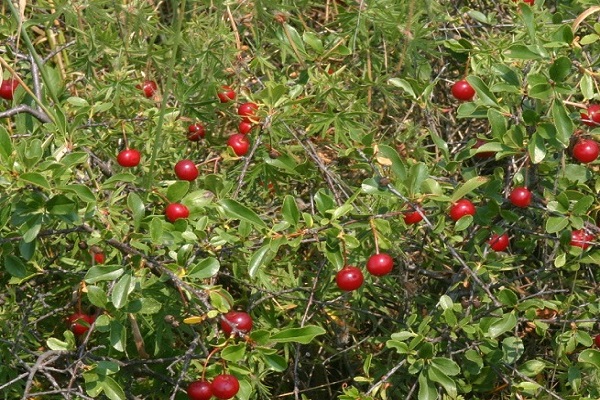
If you need a particularly frost-resistant and unpretentious variety, the Early Stepnaya cherry is suitable. Small dark red fruits are good for canning and juice production. In the presence of pollinators, it gives decent annual yields (up to 3-4 kg per bush).
Features of planting and care
It is better to lay a cherry shrub garden on a gentle slope, where there is no risk of spring stagnation of melt water. Choose an open, sunny place with sufficient area for the growth of shoots. Planting and caring for bush cherries is not very difficult, but it contains several important points.
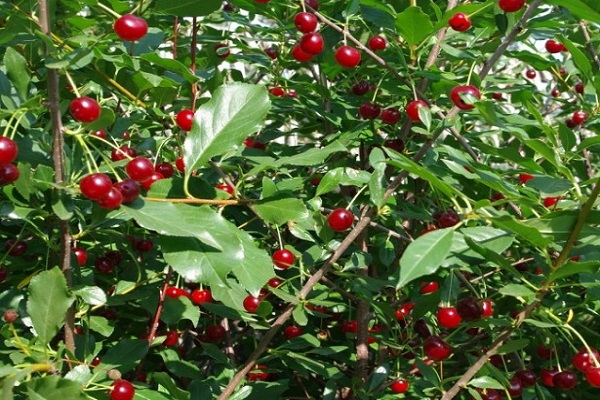
Important! On a plot nearby, it is desirable plant other varieties of cherries (pollinators) with similar flowering times, this will increase the yield by 2-3 times.
Soil preparation
Steppe cherry is less demanding on the soil than tree cherry, but responds well to the introduction of organic and mineral fertilizers when planting.
The root system of the bush lies close to the surface, so it is enough to prepare a fertile layer of 30-40 cm.To do this, humus is introduced under deep digging (10-12 kg / m2) and complex mineral fertilizing (150 g / m2) superphosphate. Sowing green manure with subsequent digging at the budding phase will help improve the structure of the soil and fill it with organic matter.

Council. It is better to dig holes for seedlings in advance, at least a month before planting.
Landing
It is important to start planting seedlings in the fall, three to four weeks before the first frost, or in the spring, before the start of sap flow:

- The pit is filled in 3-4 days with fertile soil with the addition of organic and mineral components (humus 4-5 kg, potassium salt 50 g, superphosphate 150 g, ammonium sulfate 50 g).
- Healthy young bushes with a developed fibrous root have a root collar a couple of centimeters above ground level.
- Around the seedlings, the ground is compacted with your feet. After watering, the soil settles, and the neck should be at ground level.
One of the reasons for the increased frost resistance of steppe cherry is its ability to retain snow between bushes and undergrowth. It makes sense to place seedlings close to each other (1.5-2 x 2 m). The planting is mulched with a thick layer of dry grass or peat.

Fertilizer
With proper soil preparation in the first year, additional fertilizing is not required. For the next 2-3 years, one spring nitrogen fertilization is enough (urea 20 g / m2) for digging. Further, the bushes enter the fruiting period and require a more serious introduction of nutrients: in the fall - humus for digging (8-10 kg / m2), in the spring - superphosphate 50 g / m2, potassium chloride 10-20 g / m2, urea 25 g, followed by incorporation.
Watering
Although bush cherry is considered not very demanding on soil moisture, it gratefully responds to timely watering with an increased yield and juiciness of drupes. Watering 2-3 times per season is considered sufficient: after flowering, during the pouring of fruits, at the end of summer. Shallow loosening is recommended after each watering 2-3 days later.
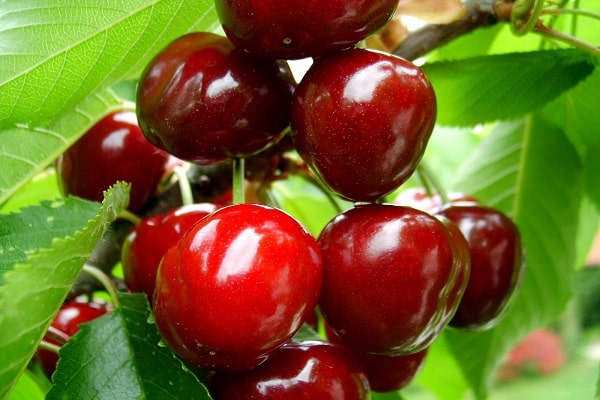
Pruning
Shrub cherry is characterized by independent formation of a rounded crown. Therefore, pruning is mainly aimed at reducing thickening and rejuvenation. Fruiting usually occurs at last year's growth, so only the extra branches growing inside the crown are removed.
Rejuvenation of cherry bushes is carried out after the growth decay, cutting off the skeletal branches in the places where branching stops.
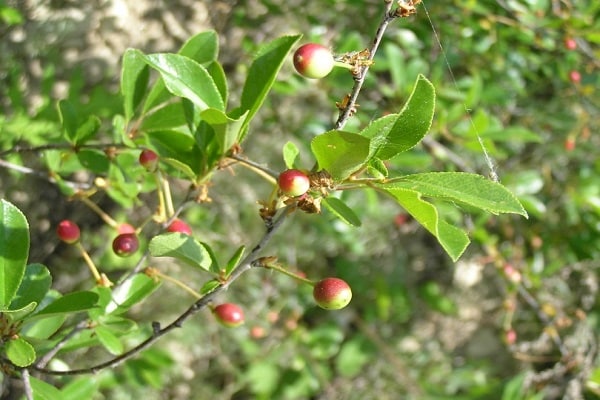
Since the steppe "inhabitant" is characterized by a large amount of growth, thinning should be carried out in a timely manner. The lifespan of one bush without reducing fruiting is about 8-10 years. To rejuvenate the planting, strong and healthy layers are left, gradually replacing the old ones.
Advantages and disadvantages of bush cherry
Benefits:
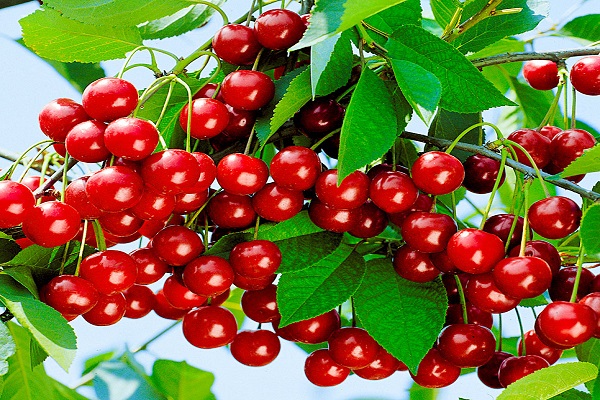
- increased frost resistance and drought resistance;
- low requirements for soil fertility;
- early maturing, fast-growing;
- decorative appearance during flowering;
- dense growth allows you to regularly rejuvenate the planting;
- fruiting occurs already in the 3-4th year;
- resistant to disease.
Disadvantages:
- sour fruits, often tart, often small;
- bears fruit only in an open, sunny place;
- numerous shoots require frequent thinning;
- short lifespan of one bush.
Planting bush cherries will not bring much trouble to the gardener. The main thing is that the site is sunny and open. Even with minimal maintenance, the annual harvest of succulent cherries will be worth the cost.
